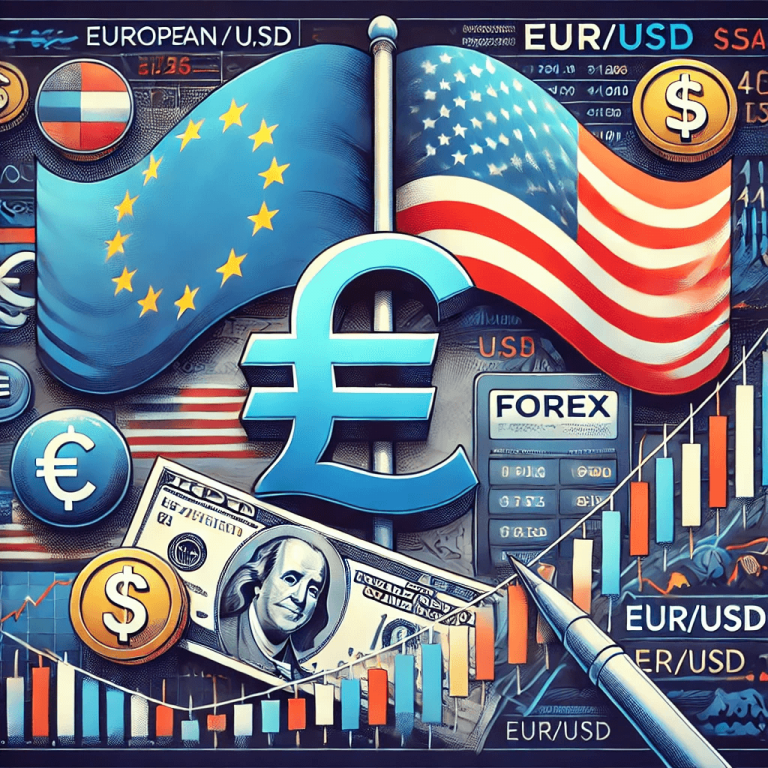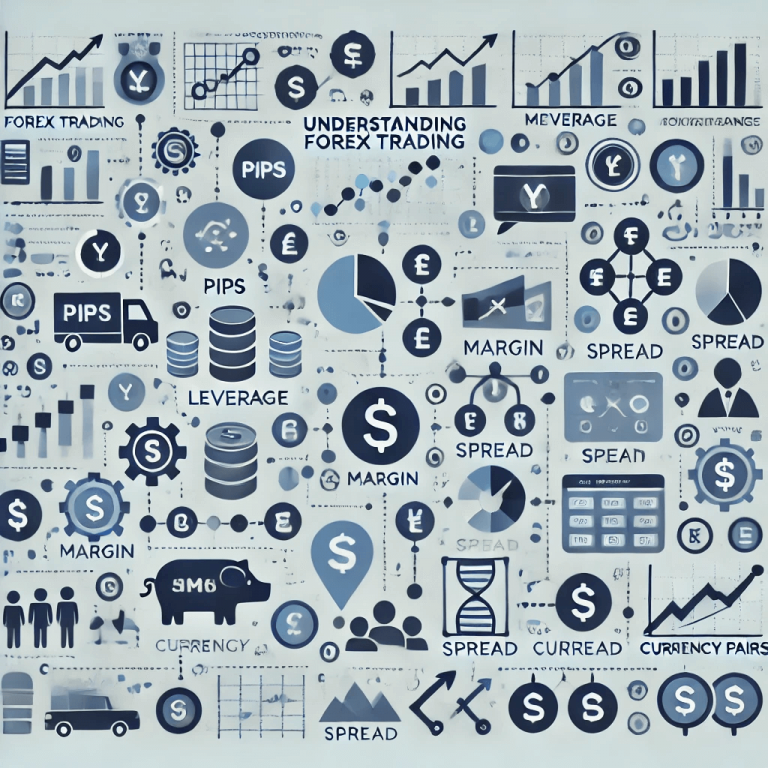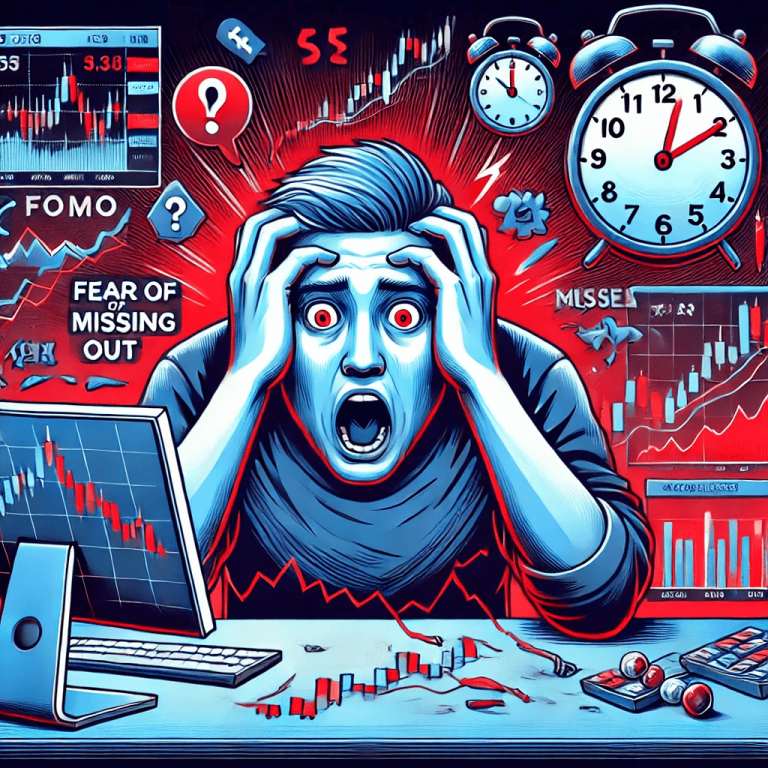In the Forex market, exchange rates can undergo significant changes as a result of various market events. It is vital that traders are aware of which factors have the greatest impact on price fluctuations and what strategies they can employ to adapt to these changing conditions.
Table of Contents
- Introduction
- Which Market Events Affect Forex?
- Macroeconomic Data Releases
- Central Banks and Monetary Policy
- Geopolitical Events and Global Crises
- Labor Market Reports
- Analysis of the Impact of Market Events on Forex
- Fundamental Analysis in the Context of Market Events
- Technical Analysis vs. Fundamental Analysis
- Trading Strategies During Key Market Events
- Pre- and Post-Data Trading
- Carry Trade and Interest Rate Changes
- How to Manage Risk During Market Events?
- Tools Supporting the Analysis of Market Events on Forex
Key Information
- Market events have a tremendous impact on the formation of exchange rates.
- Macroeconomic data, central bank decisions, and geopolitical events are key factors affecting Forex.
- Fundamental and technical analyses enable market trend predictions.
- Trading strategies must incorporate risk management, particularly during critical market events.
Which Market Events Affect Forex?
Market events have a tremendous impact on shaping exchange rates in the Forex market. Both macroeconomic data, central bank decisions, as well as geopolitical events can cause significant changes in quotations. Below is an overview of all the key factors.
Macroeconomic Data Releases
Macroeconomic data forms the foundation of fundamental analysis in the Forex market. There are a number of indicators that have a direct influence on exchange rates. Among them, GDP, which reflects the health of the economy, inflation (CPI), a measure of the rise in prices for goods and services, the unemployment rate, which indicates the state of the labor market, and PMI indicators, which assess the condition of the industrial and service sectors, can be distinguished. According to data from the International Monetary Fund, GDP growth in some economies averaged around 3.5% in recent years (Source: IMF, link).
These reports can significantly influence investors’ perceptions of an economy’s future and monetary policy, ultimately leading to changes in exchange rates. Robust economic data typically supports the strengthening of a domestic currency, while weak performance may lead to its depreciation.
| Indicator | Description | Impact on Exchange Rate |
|---|---|---|
| GDP | Economic Growth | Strengthens the currency with strong performance |
| Inflation (CPI) | Rise in the prices of goods and services | Negatively impacts if too high |
| Unemployment Rate | Labor market conditions | Higher unemployment can weaken the currency |
Central Banks and Monetary Policy
Central banks, such as the FED (United States Federal Reserve), ECB (European Central Bank), BoE (Bank of England), or BoJ (Bank of Japan), have a key influence on the Forex market through their monetary policy decisions. In particular, these decisions concern interest rate levels, which can affect the attractiveness of a given currency in the eyes of investors. According to the OECD, the average interest rates in developed countries were approximately 1.75% in the last quarter (Source: OECD, link).
Interest rate hikes often result in the strengthening of a currency, as higher rates attract investors seeking better returns on deposits. Conversely, rate cuts can lead to currency depreciation. Furthermore, central banks’ communications regarding future actions can trigger strong market reactions, particularly if they are unexpected or contradict previous forecasts.
Geopolitical Events and Global Crises
Geopolitical events, such as wars, political conflicts, or economic sanctions, can have a serious impact on currency markets. In times of uncertainty or tension, investors often place orders for safe-haven assets, such as the Swiss franc (CHF) or the Japanese yen (JPY), which leads to their strengthening.
Political conflicts and economic sanctions can cause changes in international trade and, as a result, affect exchange rates. Trade tensions, such as those between the USA and China, can lead to market fluctuations as they alter capital flows and foreign investments.
Labor Market Reports (NFP, ADP, Unemployment Rate)
One of the most important reports for Forex traders is the Non-Farm Payrolls (NFP) – a monthly report published by the United States Department of Labor, which provides information on the number of new jobs in the non-agricultural sector. The results of the report have a huge impact on the value of the US dollar, as they indicate the state of the labor market and the overall health of the economy.
Similarly, labor market reports such as ADP (a report on private sector employment) and unemployment data provide insights into the strength of the labor market. Changes in employment can influence the monetary policy of central banks, especially in the context of decisions regarding interest rate adjustments.
Analysis of the Impact of Market Events on Forex
Market events can trigger significant changes in the Forex market, and traders must be able to respond appropriately to take advantage of these movements. Understanding how various economic, political, and social events impact the market is crucial for effective trading.
Fundamental Analysis in the Context of Market Events
Fundamental analysis involves evaluating the strength of an economy by examining macroeconomic data, central bank decisions, geopolitical events, and other factors affecting currencies. With this method, traders can forecast how a given event may impact the market. For instance, strong GDP data or a low unemployment rate in a country can lead to a strengthening of its currency as they signal positive economic prospects. Conversely, central banks’ decisions to adjust interest rates can affect a currency’s appeal to investors, causing it to strengthen or weaken.
Historical economic events, such as the financial crisis of 2008, Brexit, or the COVID-19 pandemic, demonstrate how dramatically changes in monetary policy and government decisions can affect the financial markets. Currency reactions in such moments are often volatile, creating both risks and opportunities for investment. As Dr. Emily Johnson, an expert on international markets, noted, “Fundamental analysis is the key to understanding the dynamics of global markets” (Source: Reuters, link).

Technical Analysis vs. Fundamental Analysis – Which Approach is More Effective?
Technical analysis and fundamental analysis are the two main approaches in Forex trading, each with different methods and advantages.
Technical analysis involves examining price charts and indicators, such as moving averages, RSI, or MACD, in order to predict future price movements. It operates under the assumption that price history repeats itself and that the market reacts to specific support and resistance levels. Its advantage is that it allows for more rapid decision-making based on real-time data, without the need to analyze external events.
Conversely, fundamental analysis focuses on the macroeconomic aspects of an economy that can affect the value of a currency. Its drawback is that decisions based on economic data may lead to delayed market responses, and changes in central bank policies can provoke unpredictable fluctuations.
Both technical and fundamental analyses have their place in an investment strategy. Combining the two approaches—using technical analysis to precisely determine entry and exit points, and fundamental analysis to forecast long-term trends—can enhance the effectiveness of an investment strategy.
Trading Strategies During Key Market Events
During key market events, such as the release of macroeconomic data, central bank decisions, or geopolitical events, traders often employ specialized strategies that allow them to better exploit market volatility.
Pre- and Post-Data Trading
Trading around the time of macroeconomic data releases is one of the most risky, yet potentially profitable approaches. Much depends on how traders choose to position themselves before and after the announcement of the results. Taking a position prior to the release comes with risk, because if there is a discrepancy between forecasts and the actual data, sudden market movements may occur. However, some traders take this risk, expecting the outcome to align with market predictions, which allows them to secure quick profits.
Conversely, after data is released, a popular strategy is momentum trading—following the new trend triggered by the data. If the results are surprising, the market may react sharply, creating an opportunity for fast transactions. Alternatively, traders use the fade the news strategy, which involves betting against the initial market impulse, assuming that the initial reaction will be short-lived and that prices will revert to previous levels.
Carry Trade and Interest Rate Changes
The carry trade strategy involves borrowing a currency with low interest rates and investing in a currency with higher rates, thus profiting from the difference in yields. Changes in interest rates have a direct impact on the effectiveness of this strategy. If a country’s central bank raises interest rates, that country’s currency becomes more attractive for carry trade, which can lead to its appreciation.
Conversely, a reduction in interest rates decreases the profitability of carry trade, as the yield differential between currencies narrows. Traders monitor central bank decisions to anticipate changes in rates and adjust their positions accordingly. The currencies most commonly used in the carry trade strategy are those offering high interest rates, such as the Australian dollar (AUD), New Zealand dollar (NZD), or Russian ruble (RUB), paired with low-interest currencies like the Japanese yen (JPY) or the Swiss franc (CHF).
| Strategy | Description | Risk |
|---|---|---|
| Momentum Trading | Capitalizing on sharp moves following data releases | High |
| Fade the News | Betting against the initial market impulse | Moderate |
| Carry Trade | Investing in high-yield currencies financed by low-yield currencies | Variable |
How to Manage Risk During Market Events?
Risk management during significant market events is essential for protecting capital. High volatility caused by data releases or central bank decisions necessitates extra caution. Proper position sizing and the use of Stop-Loss orders help avoid unnecessary losses.
During large market moves, it is important to adjust position size to the level of risk. An overly large position can lead to significant losses when the market suddenly reverses direction. A Stop-Loss order helps limit losses, safeguarding capital against unexpected changes.
It is also crucial to avoid the “Whipsaw effect” – abrupt market swings that can catch unprepared traders off guard. To prevent this, it is advisable to wait for confirmation of the trend direction after the initial market impulse, ensuring that the market will not reverse shortly thereafter.
Tools Supporting the Analysis of Market Events on Forex
Analyzing market events on Forex requires the use of appropriate tools that allow for real-time monitoring of market changes and forecasts. Economic calendars, such as Forex Factory or Investing.com, are essential tools in a trader’s work. They allow tracking of upcoming macroeconomic events, such as releases of GDP data, inflation, unemployment rates, or central bank decisions, which helps in planning strategy and anticipating the timing of significant market reactions.
Additionally, market alerts and notifications are further tools that help monitor market changes in real time. Platforms such as MetaTrader 4/5 offer built-in alert systems, and there are many dedicated mobile applications that allow traders to receive notifications about important changes even when they are not directly at their computer. These tools enable swift reactions to events that may impact the market.

Market events have a tremendous impact on the Forex market, which is why it is crucial for traders to understand how macroeconomic data, central bank decisions, or geopolitical events shape exchange rates. Effective risk management, combined with proper fundamental and technical analysis, is key to making sound investment decisions. Utilizing tools such as economic calendars and market alerts allows for rapid responses to market changes, thereby increasing the chances of success and better controlling risk during significant market events.




